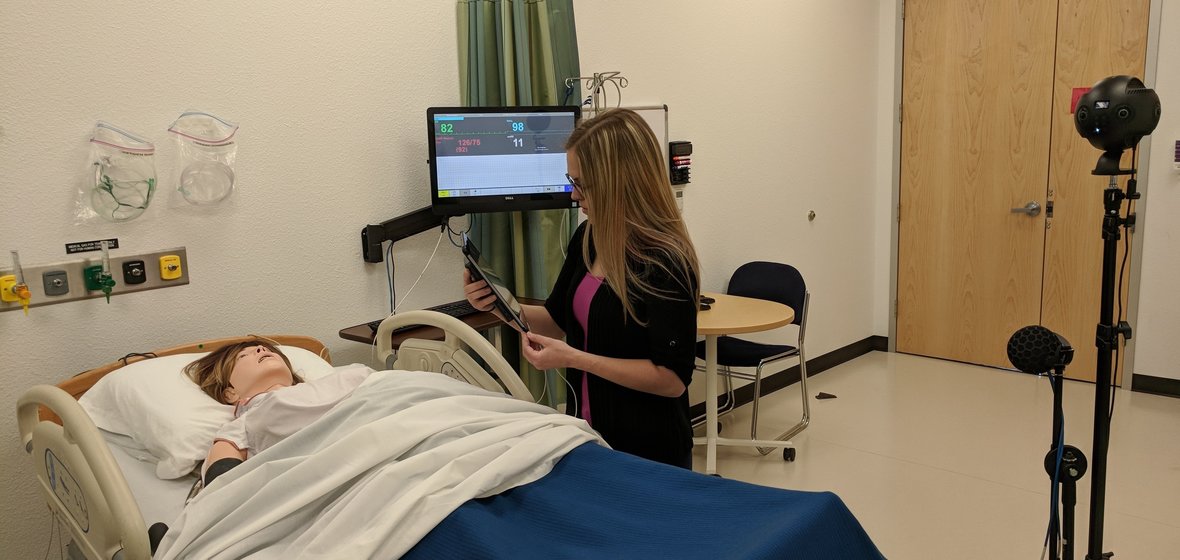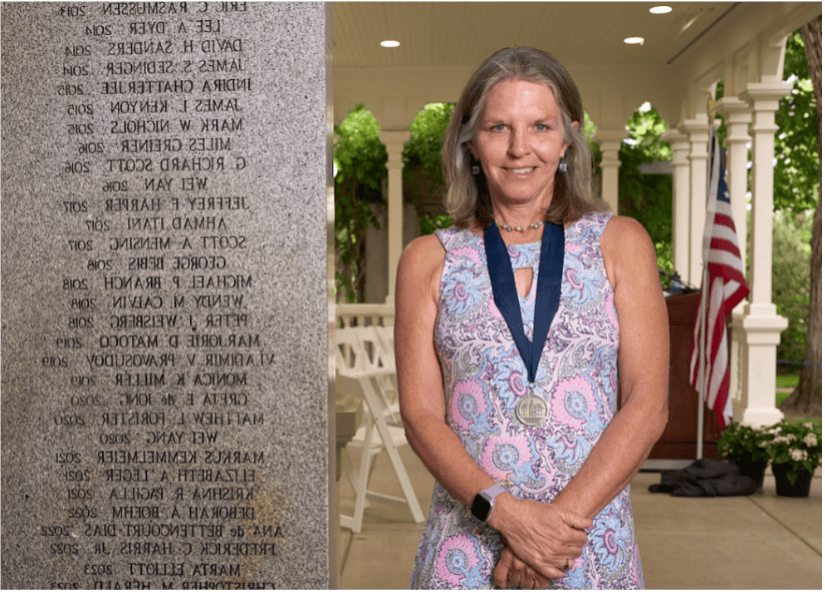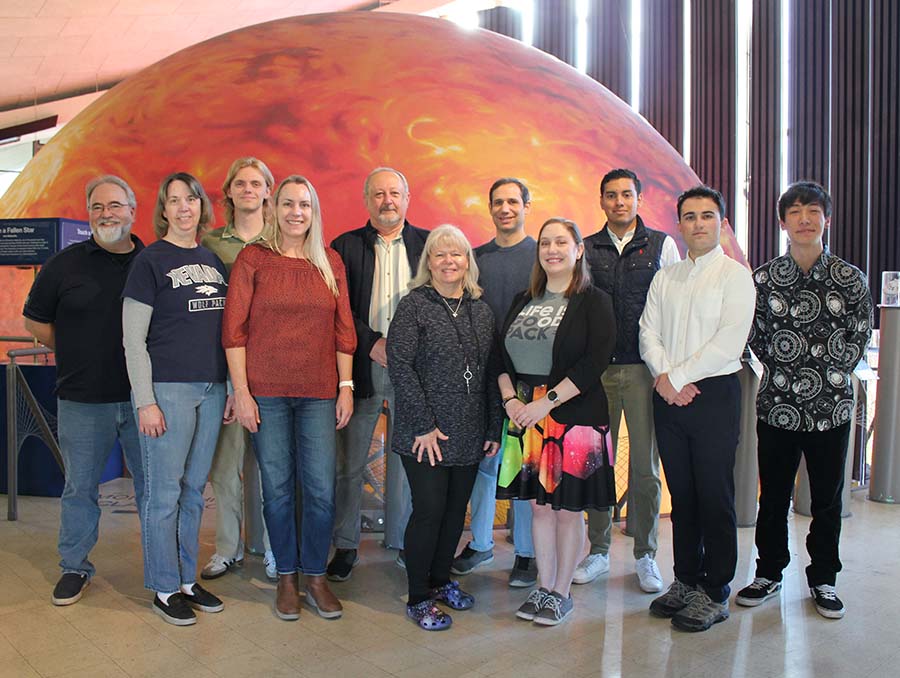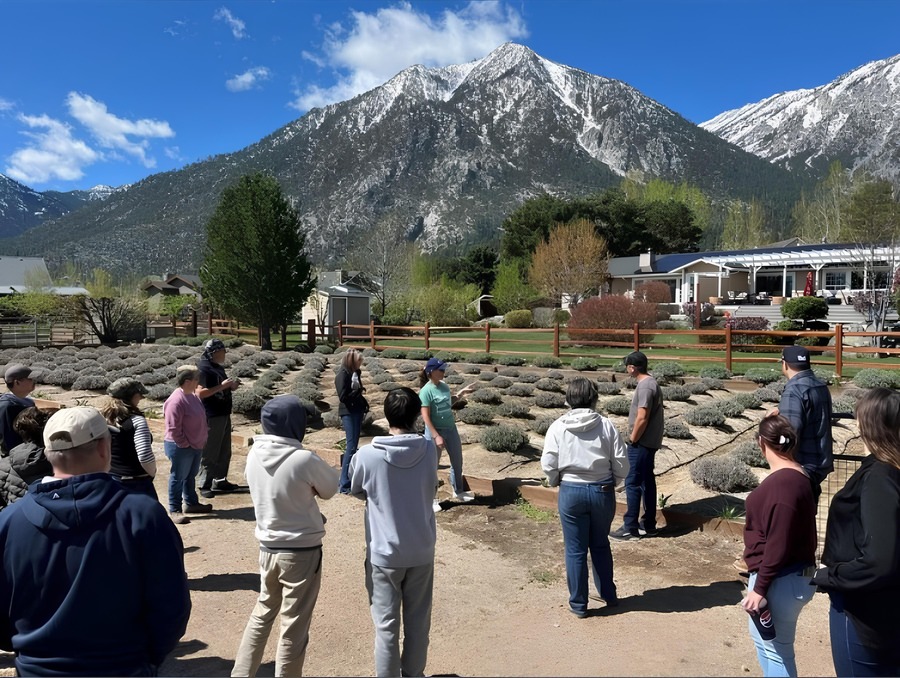University Libraries at the University of Nevada, Reno, along with UNR Med, Renown and several University Departments are working together to revolutionize nursing and medical education at Nevada.
University researchers, Alison Szarko and Steven Anbro, along with University Libraries, Computer Science and Engineering, Psychology, Journalism, Nursing, UNR Med, Renown and UC Irvine recently completed a pilot study where they incorporated VR technology into the educational curriculum for third-year nursing and medical students to understand and analyze situational awareness and communication between students and simulated patients, doctors and nurses. The study looked at resolving communication issues between nurses, doctors and other medical professionals. More than 100 students participated in the study.
This story was recently featured as a KTVN 2News Health Watch story with Kristen Remington. To watch the video click here.
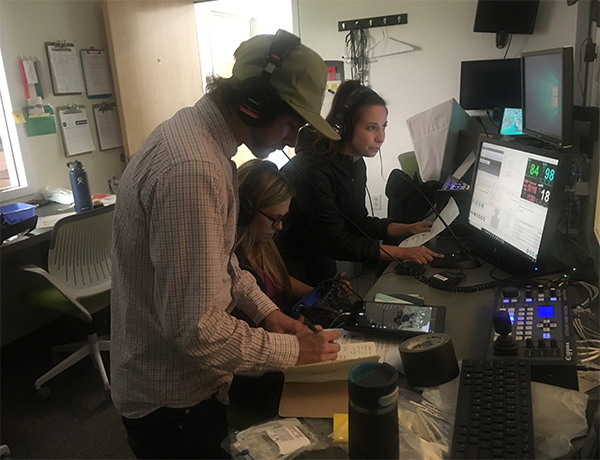
University Libraries VR team members Michelle Rebaleati and Luka Starmer with a partner from the Psychology Department are seen behind the scenes during 3D, 360-degree video filming session at UNR Med.
"We are looking at the feasibility of using VR in medical and nursing student training at Nevada," Anbro said. "VR allows users, or in this case students, to be immersed into tangible environments to give them life-like, hands-on experiences in their filed, before they are faced with the real deal."
Researchers leaned on the expertise of University Libraries VR experts to design specific portions of the VR simulation for the study.
"The idea to use VR training was brought up at one of our interdisciplinary research meetings," Anbro said. "From there I connected with University Libraries Multimedia Production Specialist Michelle Rebaleati and VR Specialist Luka Starmer. The interdisciplinary collaboration expanded into other areas across campus, and we were able to design a great research study."
Future doctors and nurses are often trained separately.
"Our study brought medical and nursing students together to draw attention to how students communicate with their peers - other medical professionals and patients - in times of high stress and high stakes," he said.
The pilot study used VR to place students in a medical emergency situation with a simulated patient, nurse and doctor. University Libraries created a 3D, 360-degree video that served as the students' functional laboratory.
.png)
Alisha Fong, UNR Med simulation technician, watches live footage at the School of Medicine on video screens as students simultaneously participated in the research study.
In the study, nursing and medical students were placed into an HTC Vive headset to experience the 3D, 360-degree video. Of the students participating, 20-percent wore an HTC Vive headset that had been retrofitted with eye tracking software. Journalism Assistant Professor of Health Communications, Laura Crosswell, analyzed eye tracking data gathered to gain insight into where participants were focusing and what they were looking at during the simulation. Once in the VR headset, students were introduced to a pregnant patient who was on the verge of experiencing an eclamptic seizure.
"In the simulation, students are transported to a patient room with a real doctor, nurse and patient," Anbro said. "The doctors and nurses talk to the student about the patient's condition, and the student gets to respond back to them as they ask questions, etc."
Understanding how medical teams communicate in times of crisis is important. It is critical to have both the doctor and the nurse on the same page. This is vital to the overall experience of the patient. It could be the difference between life and death. Minimizing human error could potentially save lives.
Anbro said, "We are studying what students are looking at during the interaction. How are they understanding the situation they are in? And, what are they doing with the information at hand that will influence their decision-making on their own or as part of a much larger medical team."
Researchers and University partners are using this pilot study to seek grant funding in order to expand the reach of their work.
